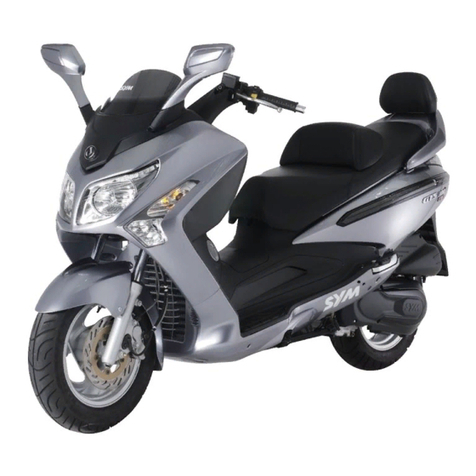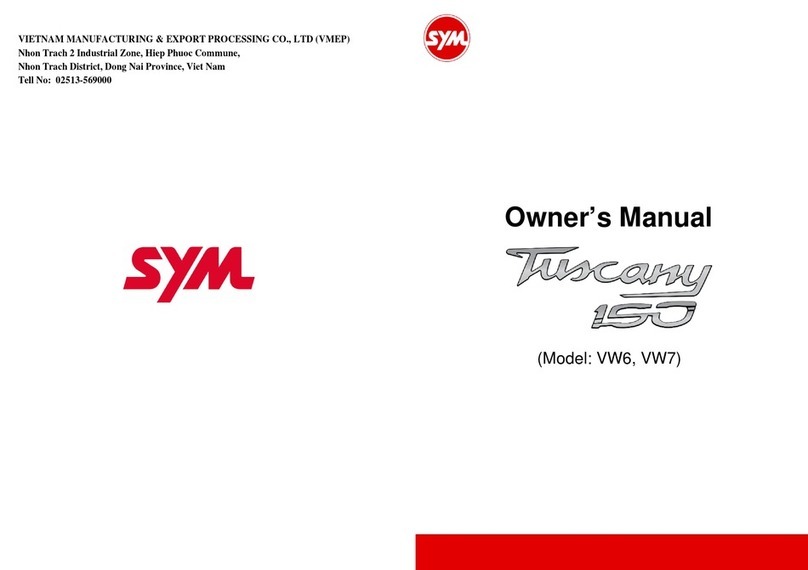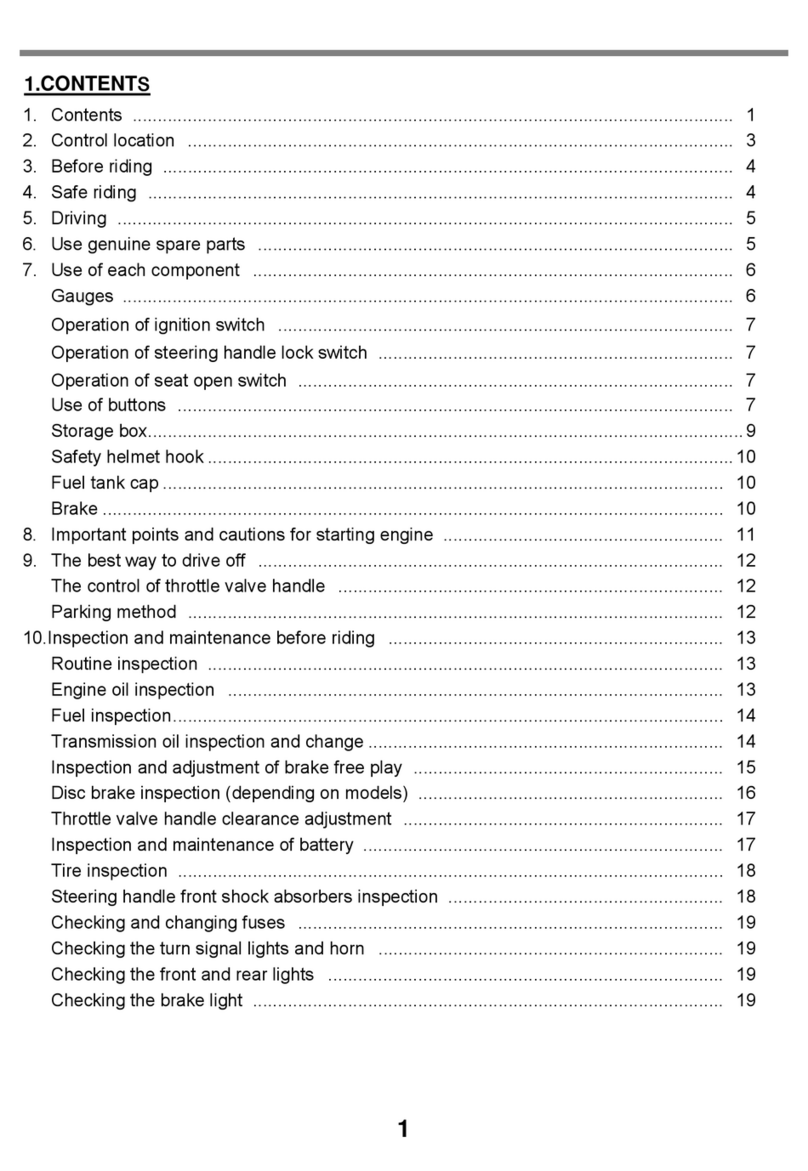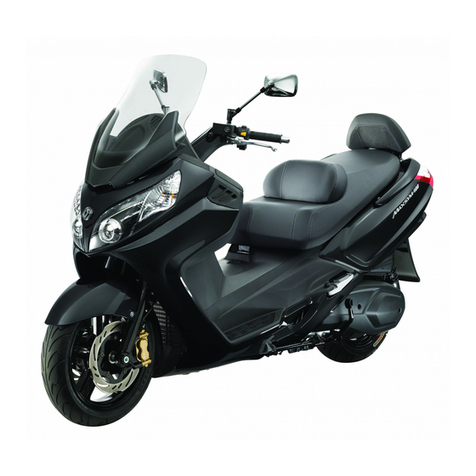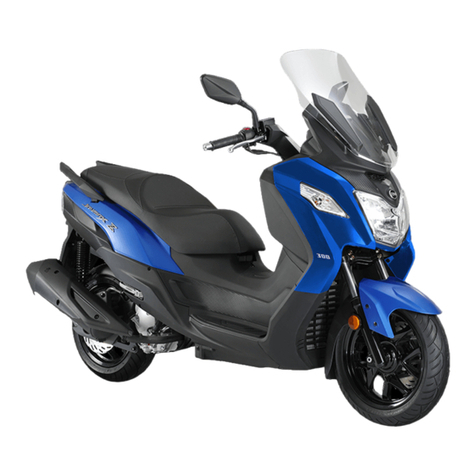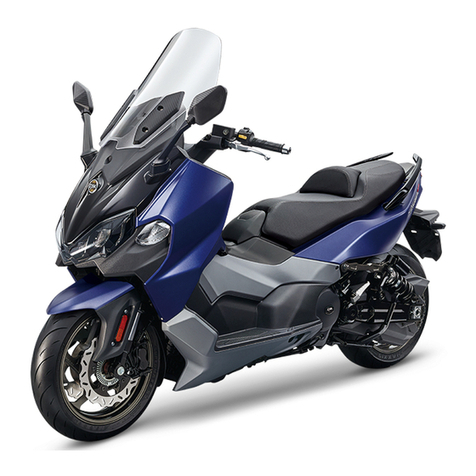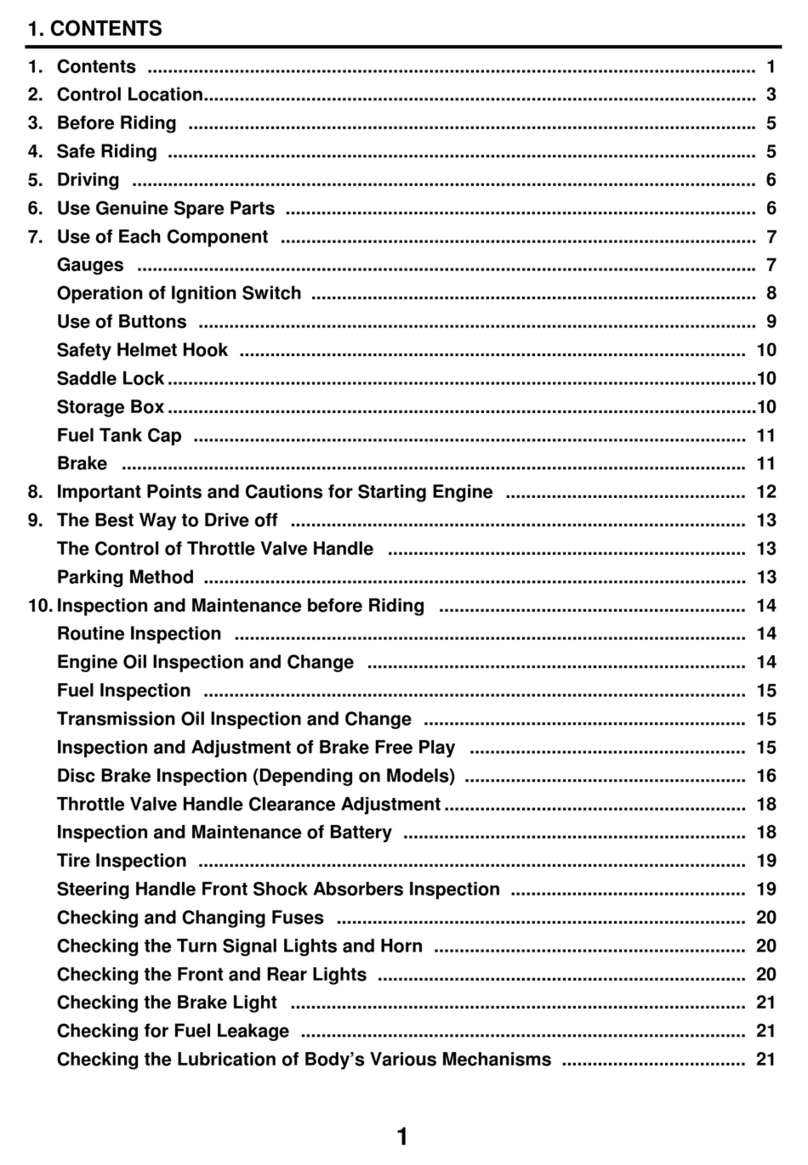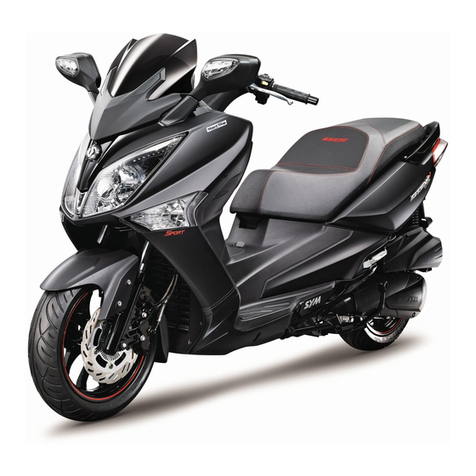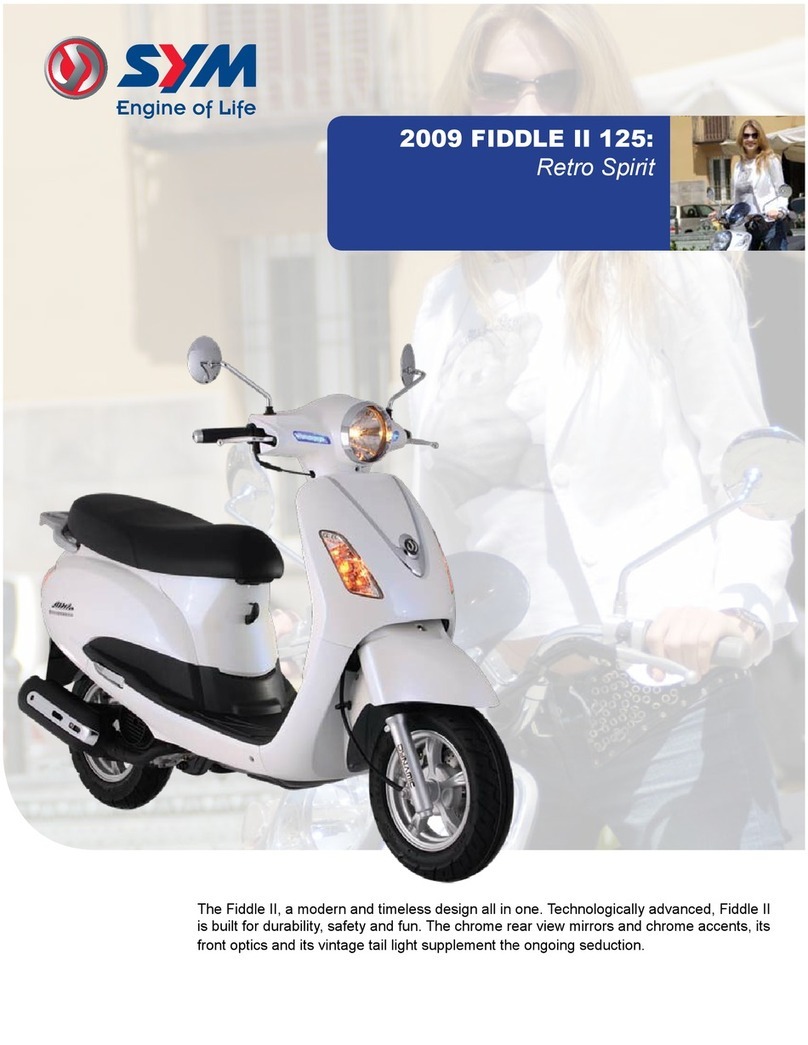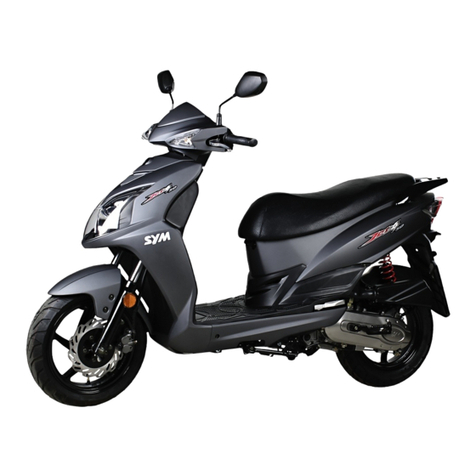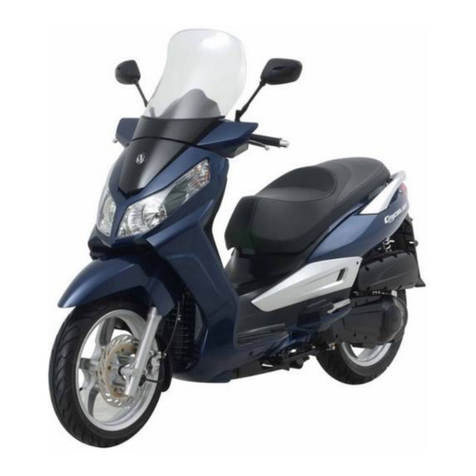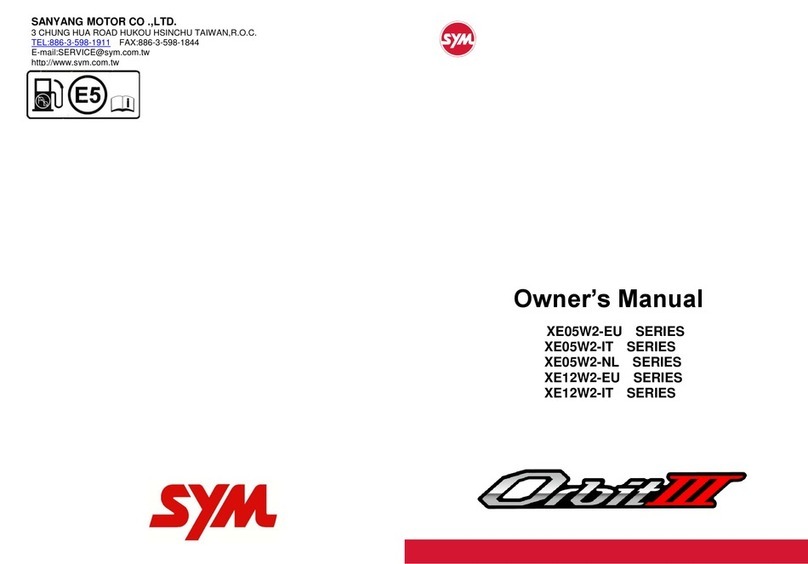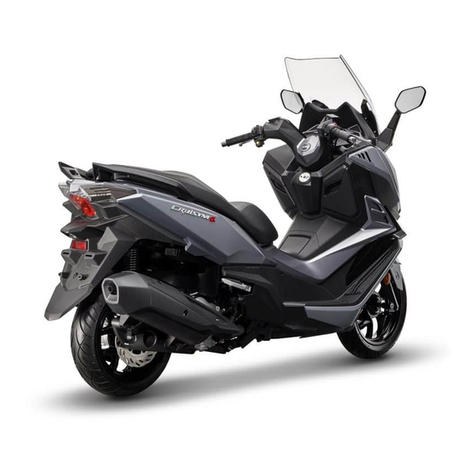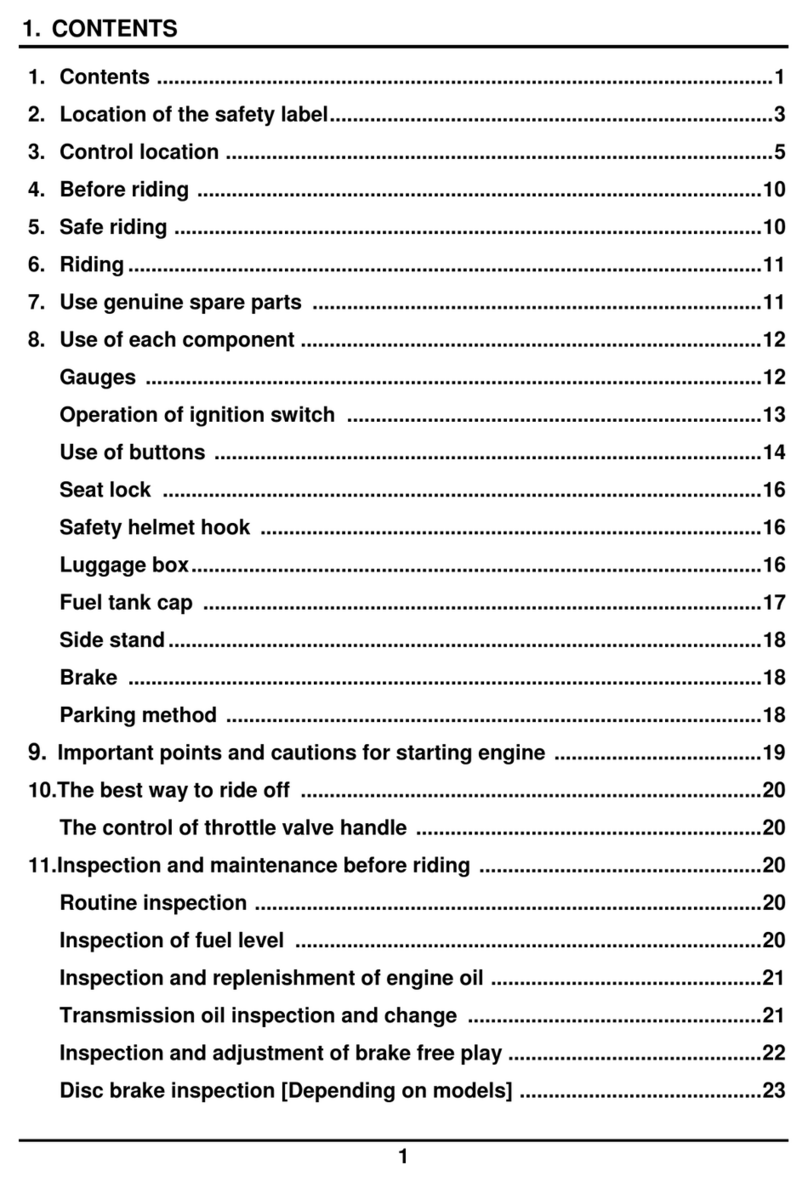
7
Speedometer/ Tachometer:
Indicates driving speed or engine rpm.
Odometer:
Indicates total accumulated distance traveled.
Trip Kilometer:
The rider can measure the trip kilometers.
In normal display status, press “MODE”button for 1second,it can show total distance traveled.
Press “MODE”button again, then it can switching over trip kilometer display mode.
In trip kilometer display status, press "SET" button for a long time, it can eliminate the mileage value.
High Beam Indicator:
This indicator comes on with high beam headlight is turned on.
Turn (left/right) Signal Indicator:
The left or right Indicator will be flashing according to the operated directions of turn signal light
switch when it is turned on.
Fuel Meter:
The pointer in this meter shows how much fuel remains in the tank.
The pointer stays in “E”position when key switch is turned to “OFF”.
Cooling temperature indicator(For:XC12WX-EU/XC12WZ-EU):
Indicates the engine cooling water temperature, engine cooling water temperature indicator if light,
should check the cooling water is sufficient and the fan motor is running.
Voltmeter/time:
Display average voltage of battery or time.
Under the normal display status, press "SET" button 0.5 second, it can switch “VOLTAGE” display
mode or “CLOCK”display mode.
In time display mode, when the scooter is stationary , long press the "MODE" button more than 2
seconds, then it enter the time setting MODE, at this time press “MODE”button 1second, it can
switching over setting mode(Hour→minutes tens digit→minute single digits).
Short press "SET" button once, figure add 1.
In setting display mode, long press the "MODE" button for more than 2 seconds, it can leave the
setting mode.
Fault indicator light:
If there is something wrong with the ECU, the warning light will light all the time.
Engine oil change warning lamp:
It is used to indicate the oil exchange time, with lights, when the vehicle was driven about 1000
kilometers, indicator light will light up, warn the users to replace the oil.
After finish oil change, After the oil change, put the main switch in “ON”, short press "SET" button 2
seconds in “OIL” mode, then the indicator light will go out.
ABS indicator light(ABS Model)(For:XC20W2-EU/XC12WZ-EU):
Normally the ABS indicator light goes on when the ignition switch is turned on and goes off
shortly after the scooter starts moving.
The ABS (Anti-lock Brake System) indicator light goes on when the ignition switch is turned on and
goes off shortly after the scooter starts moving. If the ABS is normal, it stays off. If something is
wrong with the ABS, the indicator goes on and stays on. When the indicator light is on, the ABS does
not function but if the ABS fails, the conventional brake system will still work normally.
mileage value is removed
removed

